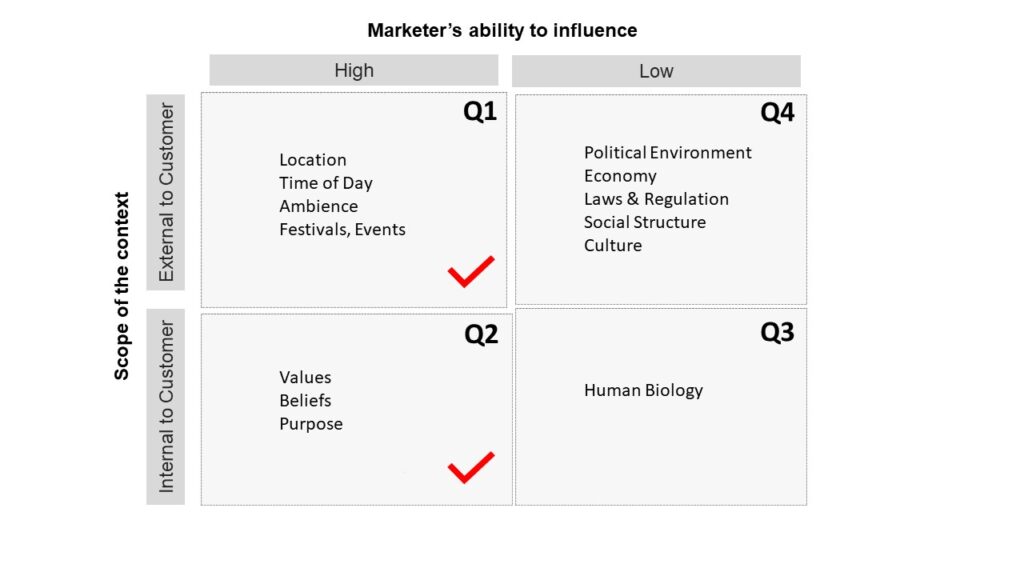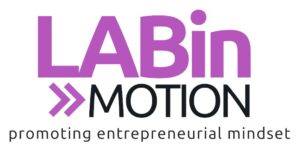Context refers to circumstances such as location, events, time of the day, cultural milieu, political and economic conditions, social structure, values, beliefs, needs, and purpose that can influence customer thoughts and actions. By focusing on a different context, the perceived value of the same offering can vary. For example, rain can be of great value to someone staying in a water-deficient area, whereas it can be perceived as a spoiler during floods. The rain per se is not good or bad, but the context in which it occurs determines its value.
In a research article[i] on how contexts affect choice, Raphael Thomadsen et al. expanded the scope of contexts to include social (e.g., with friends and family) and situational factors (e.g., locations, time, weather). In my upcoming book on discovering customer value, I have broadened the scope of contexts by including contexts that are part of an observer, including biological and mental settings. The Customer-Action-Cycle framework provides an overview of the interplay amongst various elements of customer action.
Contexts provide the settings in which an event occurs. To understand the role of contexts in discovering customer value, refer to this article. We usually refer to external contexts that can be observed using our senses. However, some contexts are part of the mental settings of an observer. Sensory-based contexts are easy to identify, but the contexts that are part of mental maps that reside in the customer’s head are relatively difficult to identify. Whether the context is sensory or non-sensory, it influences customer value. Internal mental settings can influence the choices of customer action.
The following questions can help the marketer explore the role of contexts:
- What are the different contexts in which the offering will be valuable to a customer?
- Are there contexts that will attract customers? Can I focus on the contexts instead of the customers?
- Does someone own or control a context? If the ownership of a context is identifiable, can the context owner become a potential customer?
The matrix categorises contexts based on the scope and the marketer’s ability to influence contexts. The scope of a context can be internal (as part of the customer’s mind-body system) or external (outside the mind-body system). The matrix shows the relationship between the scope of the context, types of contexts, and the marketer’s ability to influence a context.

Q1: External-High Influence
The types of contexts listed in Q1 are the easiest to influence. A marketer can choose where and when a tool can be used to change perceived customer value. A dining experience with the appropriate ambience can change customer perceptions; a highway restaurant has great value for a family travelling long distances; foods that are offered as breakfast or snack items can have different perceptions of value; a person residing near a desert will place higher value for water than someone residing near a water source. All these are examples of contexts that create value for a customer.
Q2: Internal-High Influence
Q2 lists the contexts that are internal to a customer – values, needs, beliefs, and purpose can determine the choice of customer actions and constitute the mental settings that direct activity. For example, the customer’s need for relaxation and peace is the context that attracts people to temples and ashrams in India. Entertainment parks, where people spend one full day with friends and family, meet the need for fun and connection. Shared values for fun and entertainment become the mental context that attracts customers who have similar needs. Customers are seldom aware of the influence of these mental contexts on their behaviour. A marketer has an opportunity to create customer value by changing these mental settings through brand positioning, effective communication, and providing supporting evidence. Language plays an important part in changing perceptions and is a proxy for the way someone thinks.
Q3: Internal-Low Influence
Q3 contexts refer to the constraints imposed by human biology. We are constrained to act based on the limits imposed by our neurology and physiology. We are not designed for swimming underwater for long, flying like birds, staying for long in very cold or hot places, seeing microscopic matter with our naked eyes, and hearing all kinds of sounds. We cannot do much about these biological constraints. Given this context, a supplier has the following options:
- Extend sensory capabilities
- Restore biological organs and systems
- Maintain the human body
Q4: External-Low Influence
Q4 contexts refer to variables that are systemic in nature that have an impact on all the players in an ecosystem. Economic policy, legal systems and compliance, political dispensation, and culture are not easy to change for a marketer. However, any changes in these variables can change the perception of value. A change in the law on land acquisition can be of great value to a buyer, but this affects everyone else in the ecosystem. A marketer operates within the same boundaries like every other player in the market and has no great influence on such matters.
For more clarity on the Customer-Action-Cycle framework, you can refer to this article that illustrates the concept through a commonplace example.
[i] Raphael Thomadsen et al. (2016). How Contexts Affects Choice. Presented in 2016 at the Choice Symposium held at Lake Louise, Canada. Published online: 25 November 2017. Springer Nature, 2017.





